Celebrating the Irish Traveller Community
- Barbara Diener
- August 9, 2024
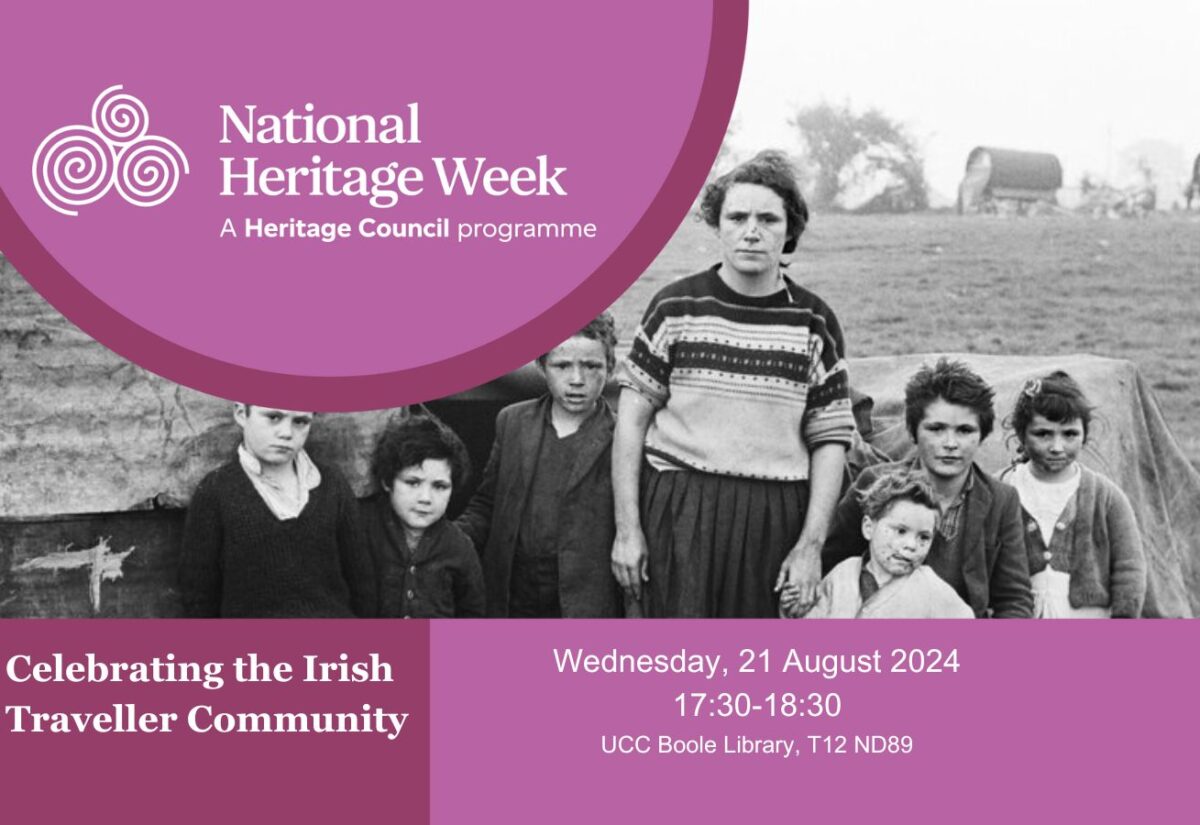
National Heritage Week 2024
This year’s theme for Ireland’s National Heritage Week is Connections, Routes and Networks! Here in UCC Library‘s Special Collections and Archives we will be honouring this theme by celebrating the rich cultural heritage of the Irish Traveller Community. Register here to join us on Wednesday 21 August from 17:30 to 18:30 for a viewing and discussion of stunning photographs and insightful printed materials from the Alen MacWeeney and Bryan MacMahon archives, and the Maura Fennell Collection.
An indigenous minority, Travellers have been a part of Irish society for centuries. With their long-shared history, cultural values, language, and customs, they are a distinct and self-defined group, traditionally nomadic. Travellers make up 1% of Ireland’s population and they were formally recognised as an ethnic group by the Irish State in 2017. Racism and prejudice towards the Traveller community remains a prevalent issue and advocacy groups such as Irish Traveller Movement and Traveller Visibility Group are working towards a shared goal: “Travellers have equal opportunities in life and feel valued in Irish society (including access to justice, employment) with their ethnicity recognised, respected and resourced.”
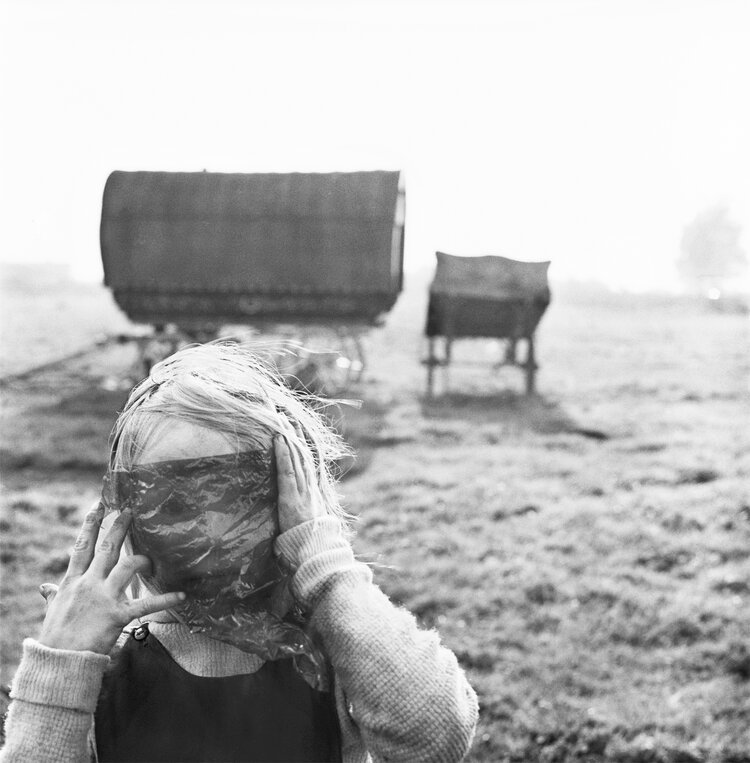
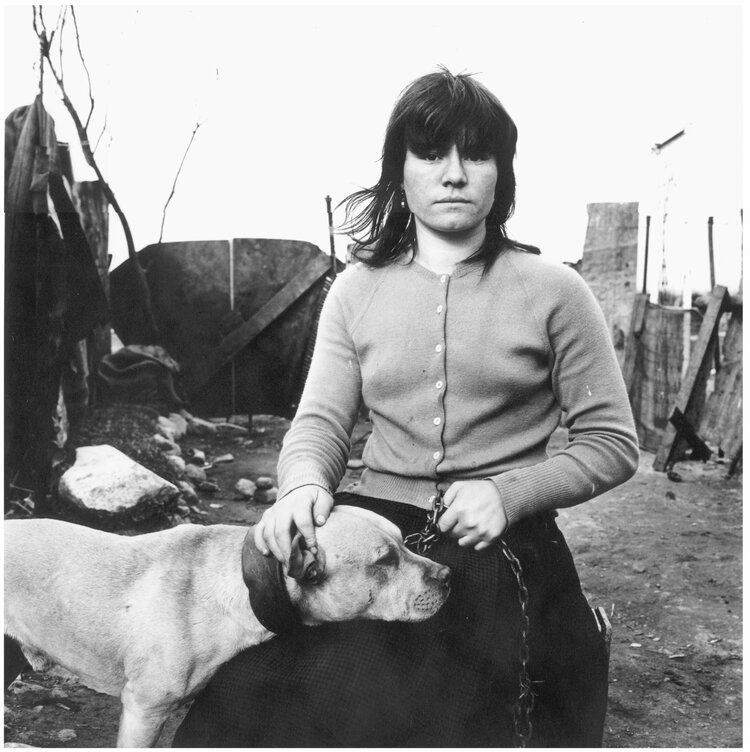
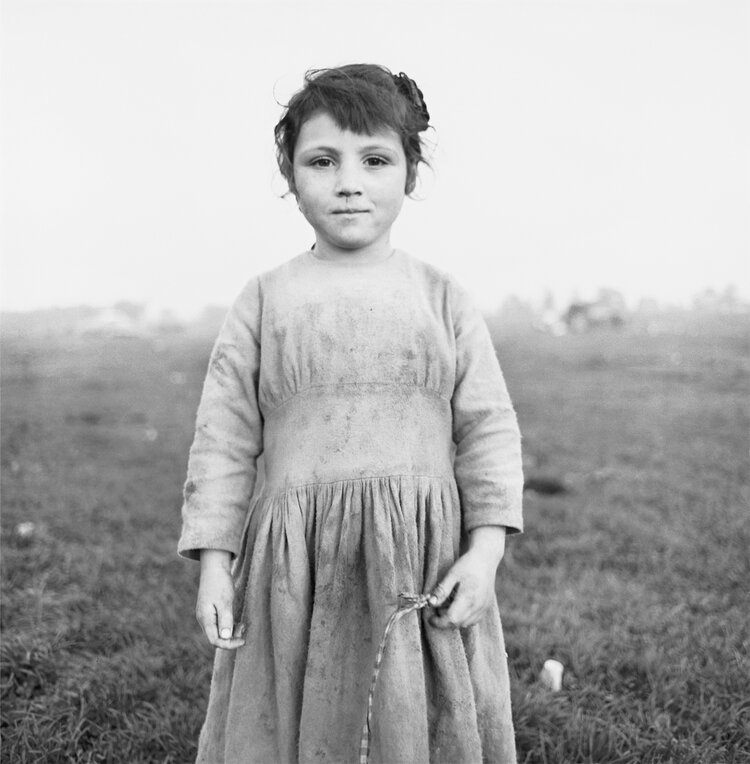
Above photographs by Alen MacWeeney, 1965-1967. Courtesy University College Cork © 2022 (All Rights Reserved). From left to right: Child with cellophane, Cherry Orchard; Mary Hutchenson, Cherry Orchard; Nell Ward, Cherry Orchard.
Language and Traditions
The Irish Traveller community has its own language called Shelta, also known as Gammon or Cant. It incorporates elements of English and Irish but has its own distinct vocabulary and structure. Shelta serves as a cultural marker and a means of communication within the community. Traditionally, Irish Travellers are known for their nomadic lifestyle, which includes traveling across the country in caravans or trailers. This way of life has influenced many aspects of their culture, including their trades and crafts, such as metalworking.
The metalworking tradition among Irish Travellers has deep historical roots. It is believed that Travellers originally took up this craft as they moved from place to place, using their skills to repair and create essential tools and goods for local communities. The itinerant lifestyle of Travellers made metalworking an ideal occupation, as it required minimal permanent infrastructure and allowed them to work independently.
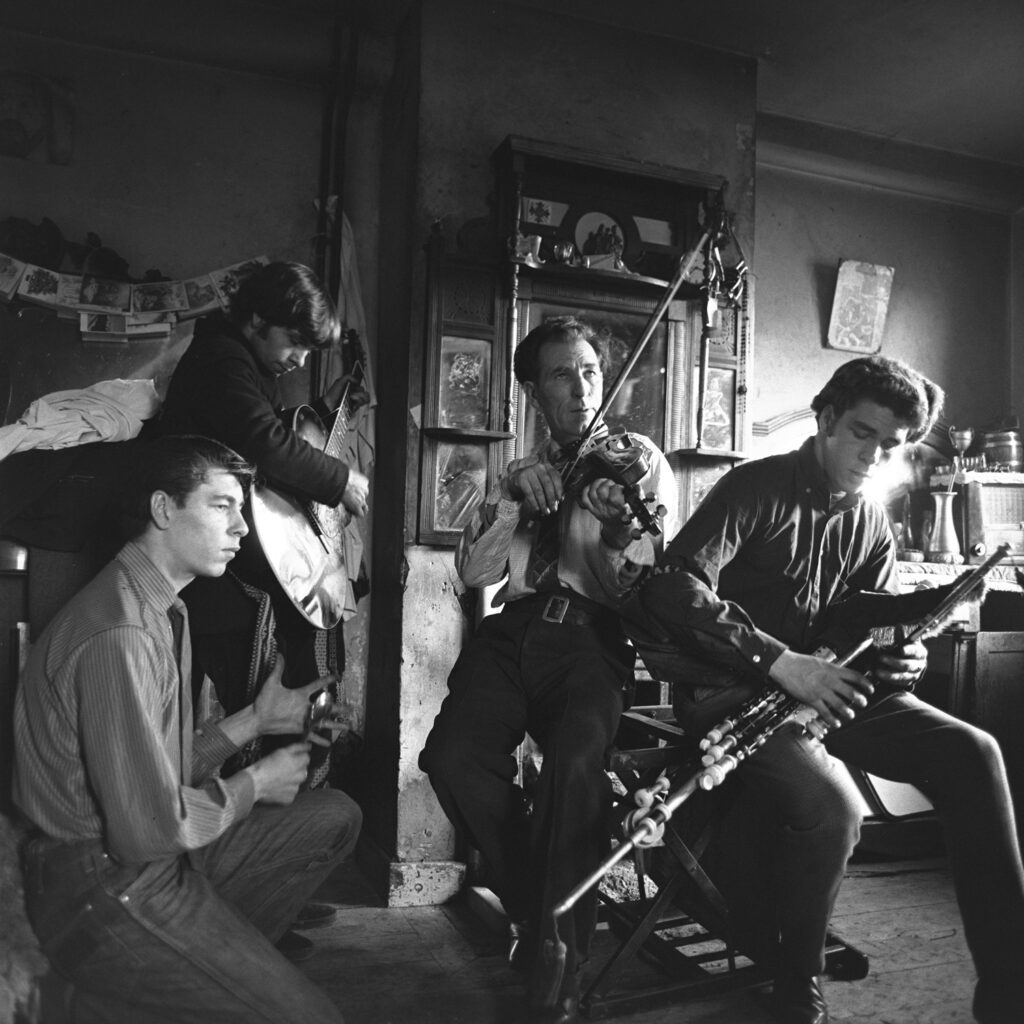
Above photograph by Alen MacWeeney. Courtesy University College Cork © 2022 (All Rights Reserved). Ted Furey and his sons Finbar, Paul, and Eddie, Ballyfermot.
Music and Dance
Music and dance are integral parts of Traveller culture. Traditional Irish music, particularly the use of the tin whistle, fiddle, and accordion, plays a significant role in their celebrations and gatherings. The community is also known for its contribution to Irish folk music and has produced several renowned musicians. Irish Traveller musicians have made significant contributions to the rich tapestry of Irish music, blending traditional tunes with their unique cultural expressions. Among the most renowned was Pecker Dunne, a master of the banjo, fiddle, and guitar. He was known for his lively performances and storytelling songs that captured the essence of Traveller life. Margaret “Maggie” Barry, another iconic figure, gained acclaim for her powerful voice and emotive renditions of classic Irish ballads, often accompanied by her banjo. The band The Fureys, with Traveller roots, has also left an indelible mark on the folk music scene with their heartfelt performances and timeless hits like “When You Were Sweet Sixteen.” These artists not only showcase the musical talents within the Traveller community but also help preserve and share their heritage with the wider world.

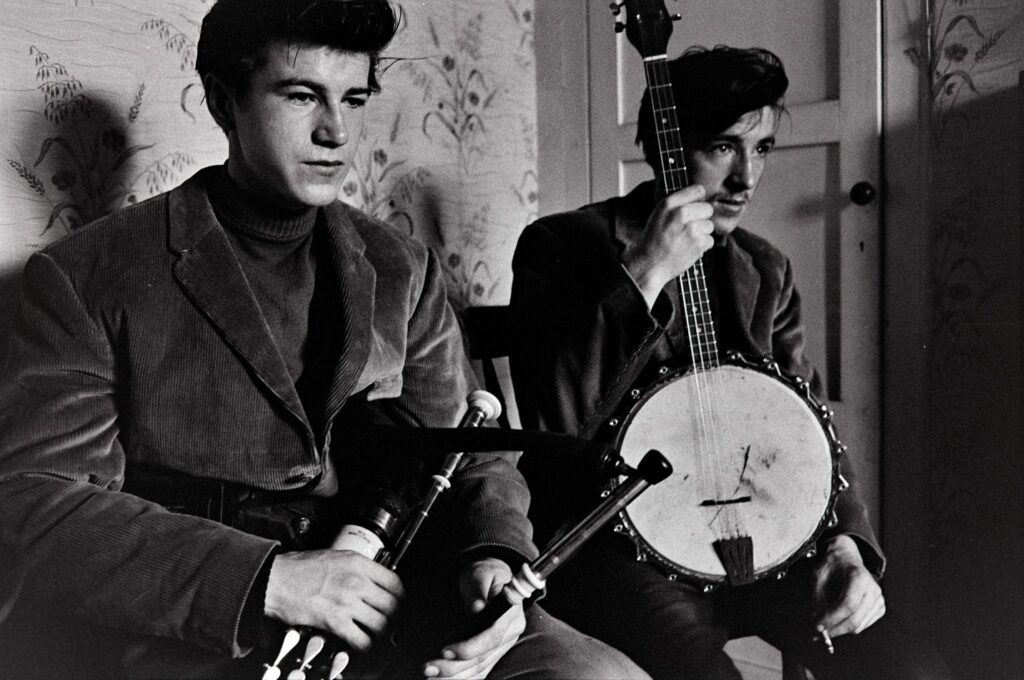
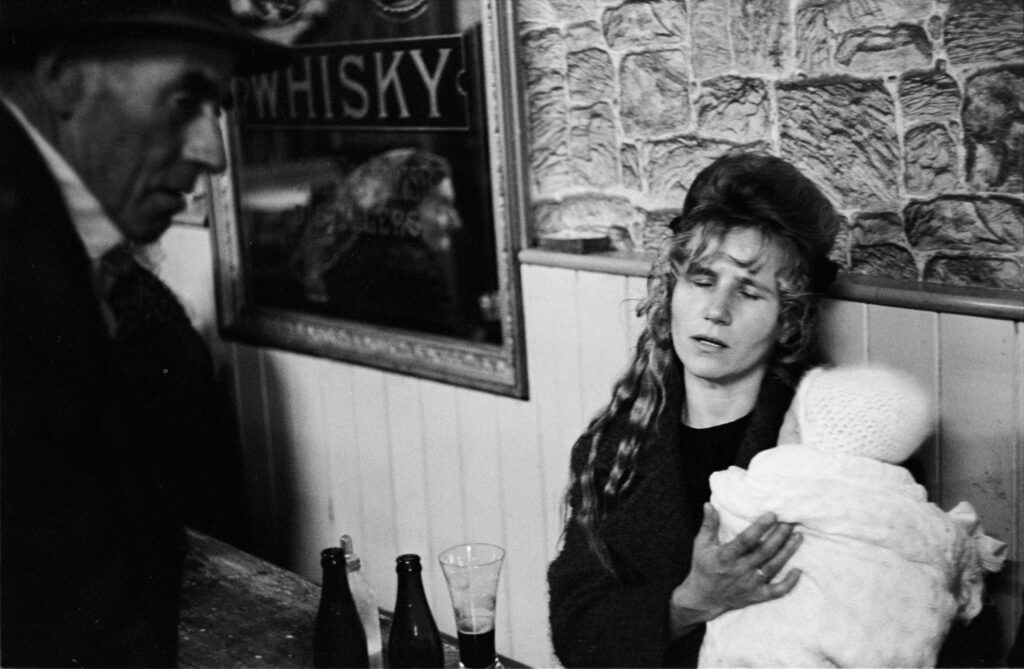
Above photographs by Alen MacWeeney, 1965-1967. Courtesy University College Cork © 2022 (All Rights Reserved). From left to right: Bill Cassidy and Kathleen Connors, Saggart; Paddy and John Keenan, Dublin; Kitty Cassidy singing, Goresbridge.
Celebrations and Storytelling
Irish Travellers celebrate various events and milestones with unique customs. Weddings, for example, are significant social events often characterized by elaborate preparations, traditional music, and dancing. The celebration of St. Patrick’s Day is also a major cultural event, showcasing their pride in their Irish heritage.
Storytelling and oral history are central to the cultural heritage of the Irish Traveller community, serving as vital means of preserving and transmitting knowledge, traditions, and values across generations. This tradition, often characterized by a rich narrative style and a deep appreciation for language, encompasses a wide array of tales, including legends, folk tales, personal anecdotes, and historical accounts. Storytelling sessions, often held around the fire or during gatherings, are communal events that reinforce a sense of shared identity and heritage. They provide a space for young Travellers to learn about their culture and history from elders, fostering a sense of belonging and continuity. These stories also serve as a means of resistance and resilience, helping the community to maintain a strong cultural identity in the face of external pressures and discrimination.
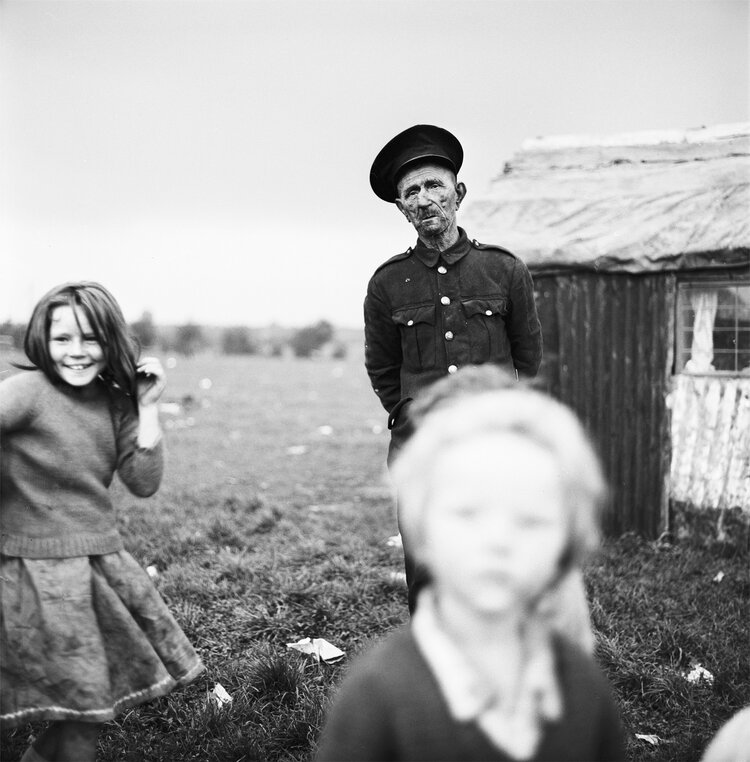
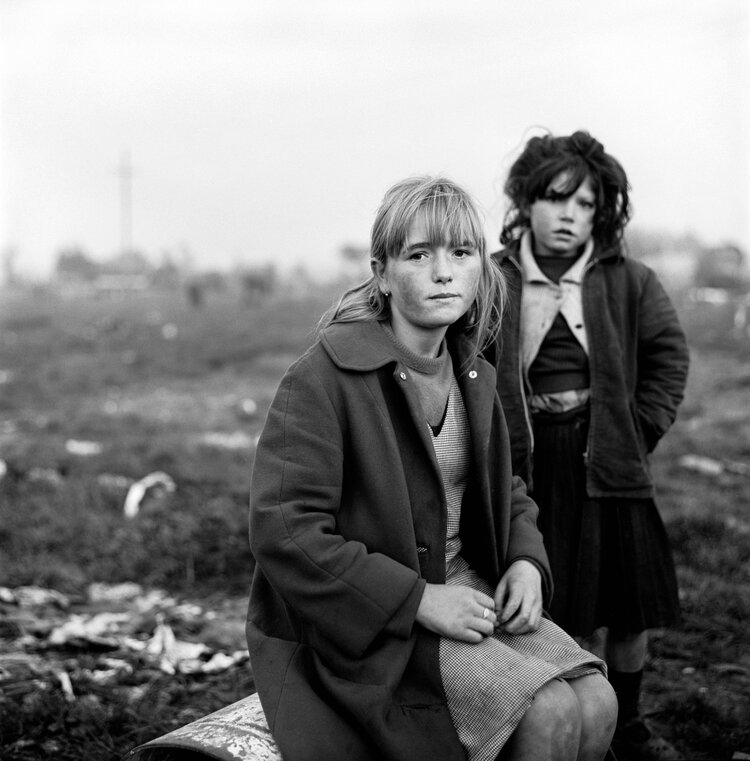
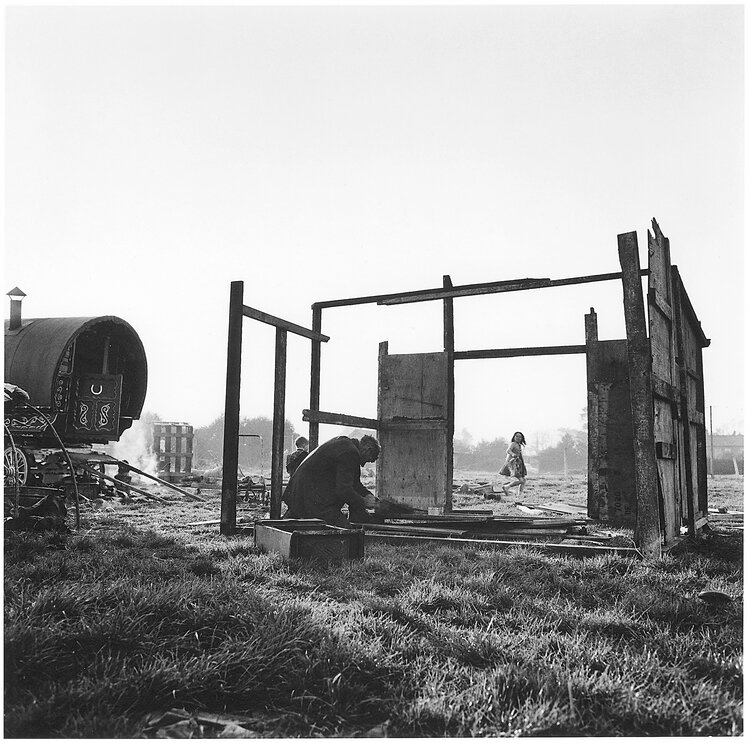
Above photographs by Alen MacWeeney, 1965-1967. Courtesy University College Cork © 2022 (All Rights Reserved). From left to right: Willie Donoghue and children, Cherry Orchard; Kathleen Connors and Nellie Handrigan, Cherry Orchard; Building a hut, Cherry Orchard.
Bryan MacMahon and Francis Kendall-Husband
Bryan MacMahon was an Irish writer and educator renowned for his contributions to literature and his work in preserving and documenting Irish folklore. He was not a member of the Irish Traveller community, but he had a deep interest in Irish culture, including the lives and traditions of Travellers. MacMahon’s work often explored themes related to Irish rural life and included elements of traditional folklore and oral storytelling.
Francis Kendall-Husband, on the other hand, was an Irish Traveller who collaborated with Bryan MacMahon. Kendall-Husband shared a wealth of traditional Traveller stories and lore with MacMahon, which helped to preserve and bring wider recognition to Traveller culture. Their collaboration was particularly important in documenting and sharing the unique aspects of Traveller life and folklore, which are often passed down orally and can be at risk of being lost without such efforts.
Through this partnership, Bryan MacMahon was able to incorporate authentic Traveller narratives into his work, thus providing a platform for the voices and stories of the Traveller community. This collaboration is a significant example of how cross-cultural partnerships can help in preserving and celebrating the diverse cultural heritage within a country.
“Our freedom as Travellers has always been about movement, choice, and community. When that’s restricted, it feels like part of our identity is taken away.”
Rosaleen McDonagh, Irish Traveller playwright and activist
